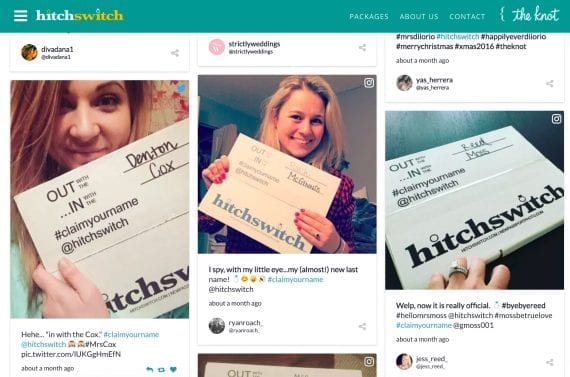Exposing products and services to prospects is a challenge for many companies. With user-generated content, your customers do the selling for you. Whether it’s through online reviews, social media posts, or blog posts, user-generated content (also called “earned media”) helps many ecommerce retailers drive awareness and sales.
In this post, I’ll explore how to use UGC to gain visibility, and new customers.
UGC Options
It’s common for ecommerce retailers to offer online reviews and ratings, and then moderate them before they go live. However, CustomInk, a custom t-shirt seller, displays unmoderated reviews on its home page.
This may seem risky. But given CustomInk’s dedication to customer service, this risk is apparently worth it. It could help to nudge a prospect into becoming a customer.

CustomInk shows “Uncensored Customer Reviews” to demonstrate that its customers are pleased.
To gain awareness with bloggers, consider a product review program. For instance, Uncommon Goods, a retailer of handmade goods, seeks expert bloggers to publish reviews of products that Uncommon Goods will supply, for free.
Such a program helps expose the brand to readers of the blogs. The reviews also appear in organic search results. Note the screenshot below for the Google search results of “uncommon goods reviews.” There are plenty of options, which help prospects make purchase decisions.

Searching on Google for “uncommon goods reviews” produces many blog posts, which help prospects decide.
Help Customers Share
Ecommerce product packaging can help produce user-generated content. For example, consider including social-media calls to action on your packaging, such as a branded hashtag. That is what HitchSwitch, a wedding facilitator, did.
Many social media users will share content, regardless. But instructing customers on what and how to share leaves little room for ambiguity.

HitchSwitch includes in its packing instructions for posting on social media.
Add an Incentive
To increase UGC, consider adding an incentive, such as a sweepstakes or drawing for prizes, as Uncommon Goods did, below.

UncommonGoods offered a chance to win a $500 gift card to customers that posted photos of UncommonGoods’ products on Instagram.
Promote Customer Content
Once your UGC starts to come in, it’s time to put it to work. Be sure to share it and credit your customers.
This can be done by exposing USG to your social media followers, as Sole Society, an apparel retailer, did on its Instagram feed.

Sole Society tags and shares customer photos on Instagram.
There are many platforms to integrate UGC into your website. Most include the main components of a successful UGC campaign, which are curating-aggregating, social commerce, and data analysis. Here are four platform choices.
For instance, cosmetics retailer Frank Body aggregates social media photos tagged #thefrankeffect on its home page using Olapic. Once it adds a customer’s photo, Frank Body also includes a “Shop Now” option for that product to entice additional sales.

Frank Body uses the Olapic platform to aggregate customers’ social media posts.
—

Consumers can buy products directly from Frank Body’s social media posts.
Measure your UGC efforts with a UGC platform or through a social-media analytics tool, such as Simply Measured, via a branded hashtag.
Dissatisfied Customers
Your social media efforts should include a plan to address dissatisfied customers.
Unhappy customers know that making their frustrations public, on an organization’s social media account, can lead to faster resolutions. But absent a plan to handle these posts, incidents can quickly spiral out of control.
For example, dissatisfied customers of 1-800-Flowers sometimes use a negative hashtag — #1800flowersfail — to vent their frustrations. This crosses over into reputation management and customer care, but even negative USG should be monitored.

1-800 Flowers ran into issues when customers posted negative reviews on social media with negative hashtags attached.
In short, UGC does more than share your company’s products or services. It provides channels to engage with your customers. Plus, integrating a UGC platform on your ecommerce site can help develop trust among prospects, increase awareness, and generate sales.




